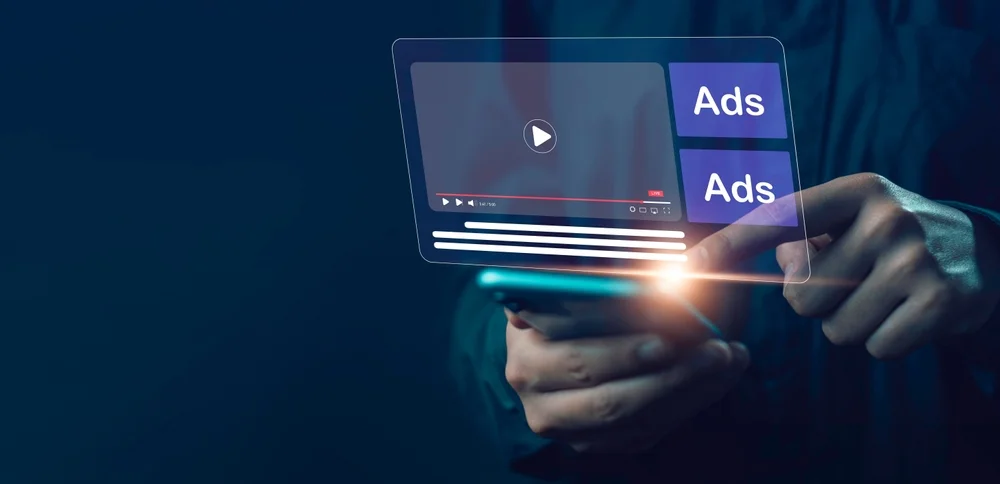Online consumer spending grew significantly, reaching 43.1 billion euros, this represents an increase of 12% on the previous year. Given this dynamic, it is essential for companies to attract users to their website or application.
That’s the whole point of drive-to-web strategy : this means finding new channels for engaging and guiding your audiences. In this article, we’ll be focusing on gamification, i.e. integrating fun and interactive elements into your campaigns. We’ll look at how you can use gamification to transform an interaction or advertisement into an engaging and memorable experience.
Drive-to-Web: Definition and Challenges
Drive-to-Web refers to marketing strategies aimed at redirecting customers from a physical channel to a virtual one (shop, event, billboard, etc.) to a website or mobile application. The aim is to encourage consumers to continue their online experience, to find out more about the brand, discover its exclusive offers or complete a purchase.
Why is a Drive-to-Web strategy essential?
If Web-to-Store transforms an online shopper’s interest into an in-store visit, Drive-to-Web does the opposite. It converts a physical contact into a digital interaction (and conversion).
The objectives of Drive-to-Web are as follows:
- Strengthening a brand’s digital presence
by transforming physical visitors into engaged internet users. They can become subscribers to the brand’s Instagram account, have a customer account or place an order online. - Collect customer data to understand your audience and personalise future campaigns.
- Increase online conversions through offers that encourage purchases on your e-commerce site or app.
Classic Drive-to-Web levers
Retailers have several tools at their disposal to transform IRL (In Real Life) prospects into online customers:
- In-store QR Codes: Displayed on POS (point of sale) advertising, a till receipt or a product label. They provide access to an online catalogue, exclusive promotions or customer reviews.
- Interactive terminals : these devices offer the possibility of exploring more products, or even ordering online if an item is out of stock.
- Offline-to-Online advertising campaigns. Billboard campaigns (in public transport), TV, radio or print ads can include call-to-actions to a website (e.g. “Go to online store for more info”).
- Connected physical events : brands can organise events during which they encourage participants to interact with their site or app (online competitions, newsletter sign-ups, etc.).
- Digital loyalty cards. This digital alternative to the physical card encourages customers to create an online account to benefit from advantages.
Gamification: a powerful Drive to Web strategy
Why ? Because a game offers an immersive and memorable experience. Here we take a look at how it compares with the other classic Drive-to-Web levers.
1. Boost brand awareness in an engaging way
Compared with QR codes and static ads, a game arouses curiosity and prompts action. A game mechanic like a Jackpot , a Quiz or a Contest boosts brand visibility. It’s also a lever for virality, as it encourages sharing on social networks (and therefore word-of-mouth).
Example: La Roche Posay’s marketing campaign via Showroomprivé was designed to give visibility to the brand’s 4 new serums. At the same time as recruiting new qualified leads with an affinity for the product and the brand. Thanks to an addictive mechanism ( Click&Win), it generated over 42K new visits to the brand’s website.
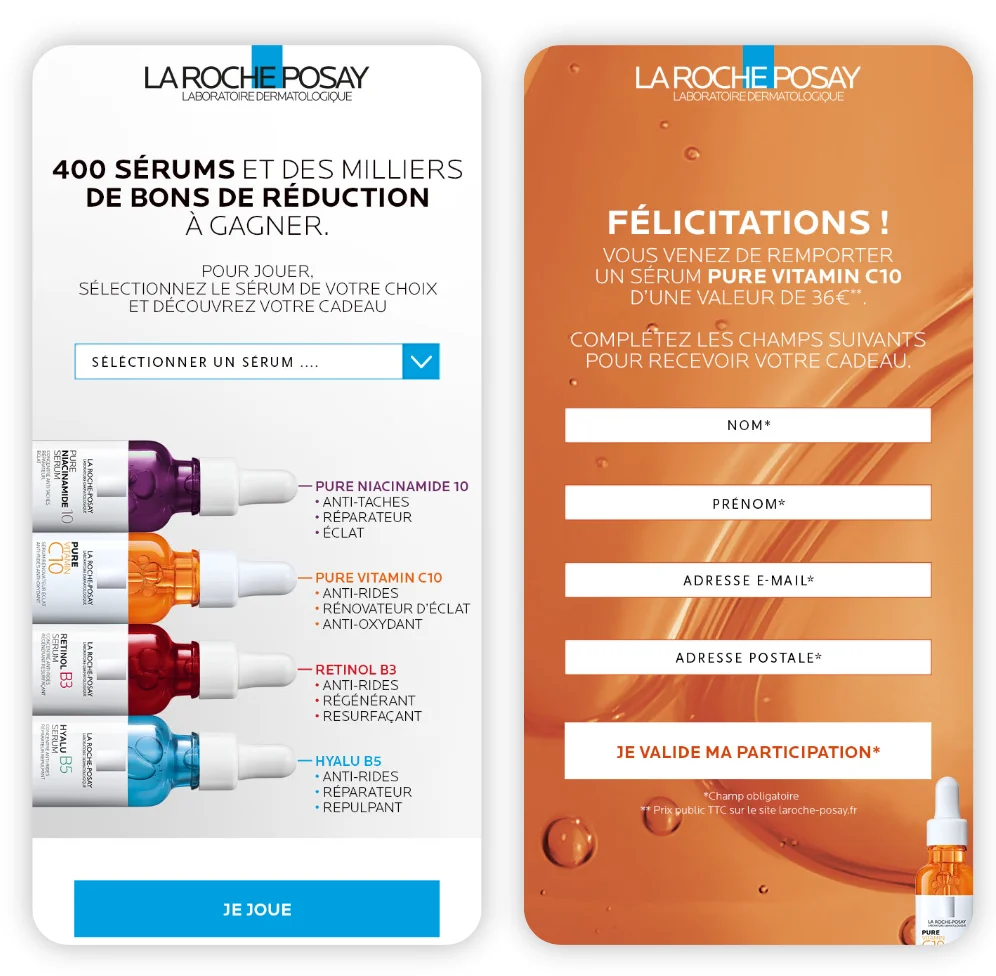
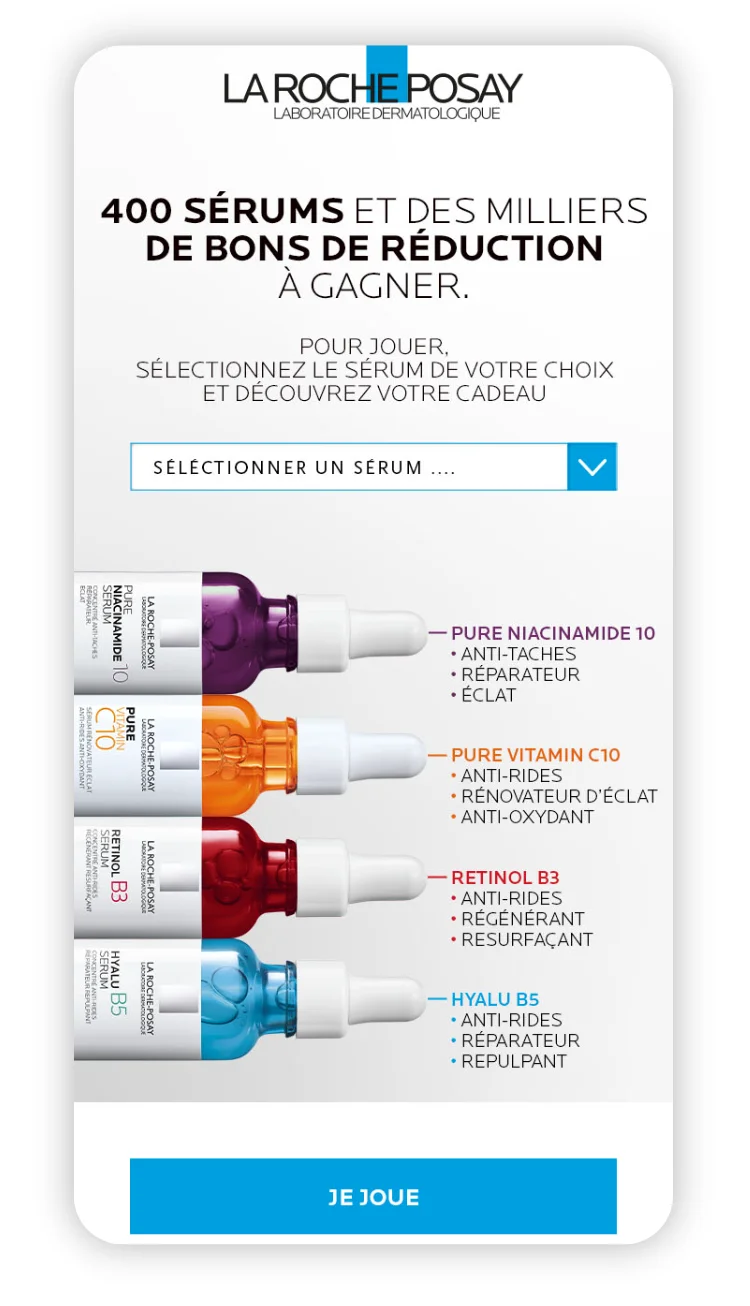
2. Refine customer knowledge and qualify leads
Unlike traditional advertising, which reaches an audience that is not always qualified, a game enables data to be collected (emails, opt-ins, purchasing preferences and frequency, etc.). Because of their interactive nature, games encourage voluntary interaction that is less intrusive than a lead capture form. Thanks to the insights they gather, brands can qualify their leads, refine their segmentation and personalise their campaigns.
Example:
Its gamified Drive-to-Web campaign enabled La Roche Posay to qualify prospects by offering them the chance to choose their favourite serum at the start of the game. The brand was able to understand the needs of its audience. Thanks to the opt-ins collected, it will be able to carry out retargeting in future campaigns.
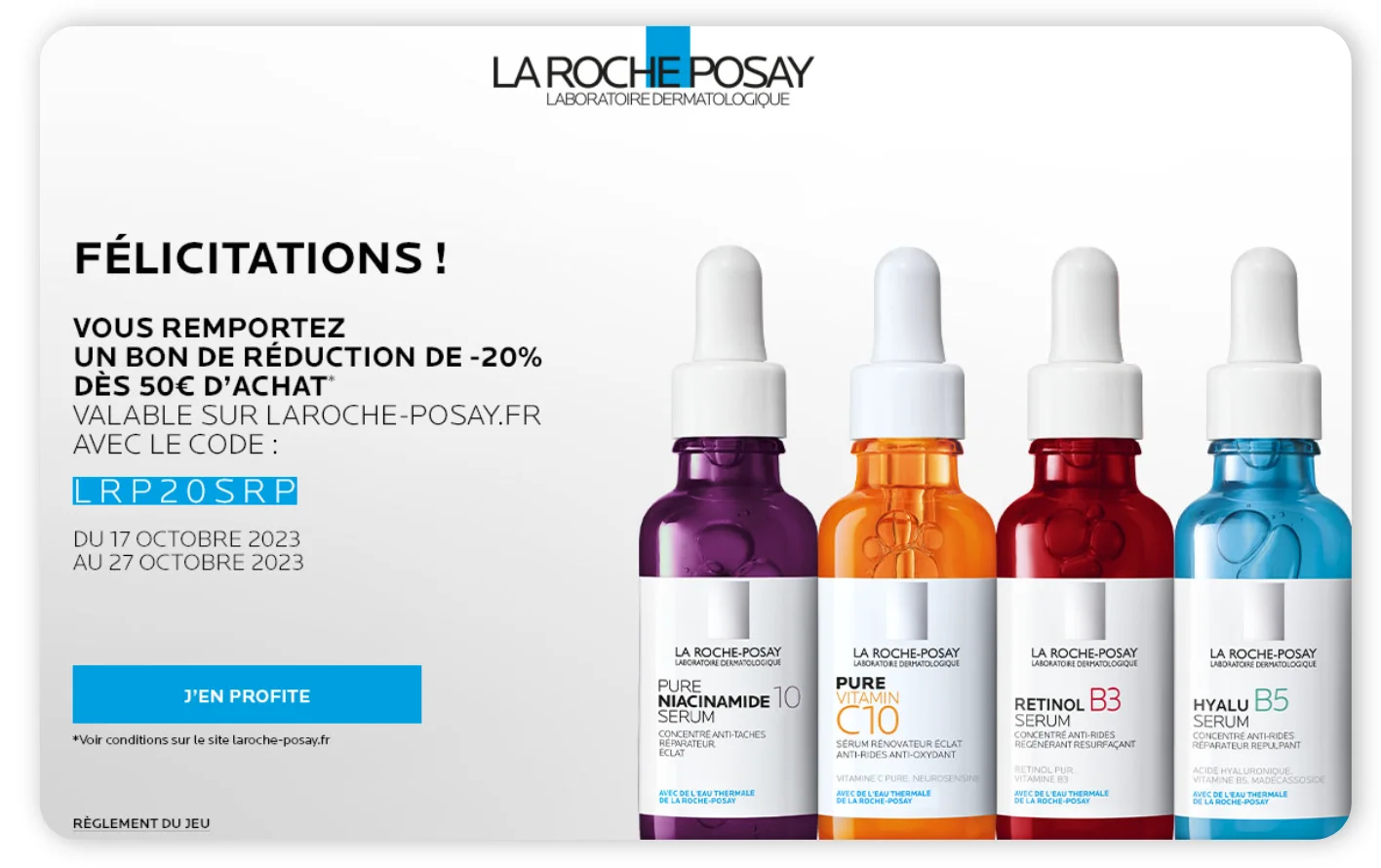
3. Boost conversion through greater engagement
Example: Casino used game marketing (a Scratch-off) and the expertise of Adictiz Ads to recruit customers. By offering discount vouchers to be won, the Drive-to-Web operation generated traffic on the site and increased sales.
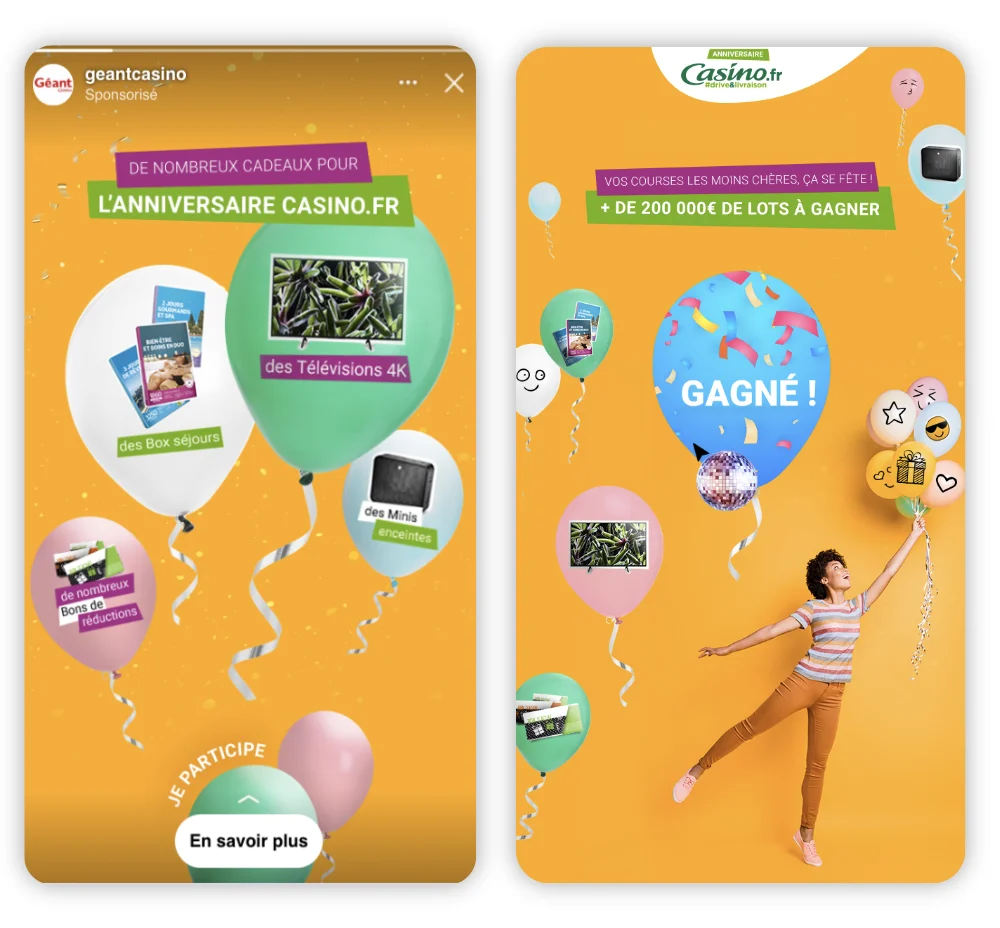
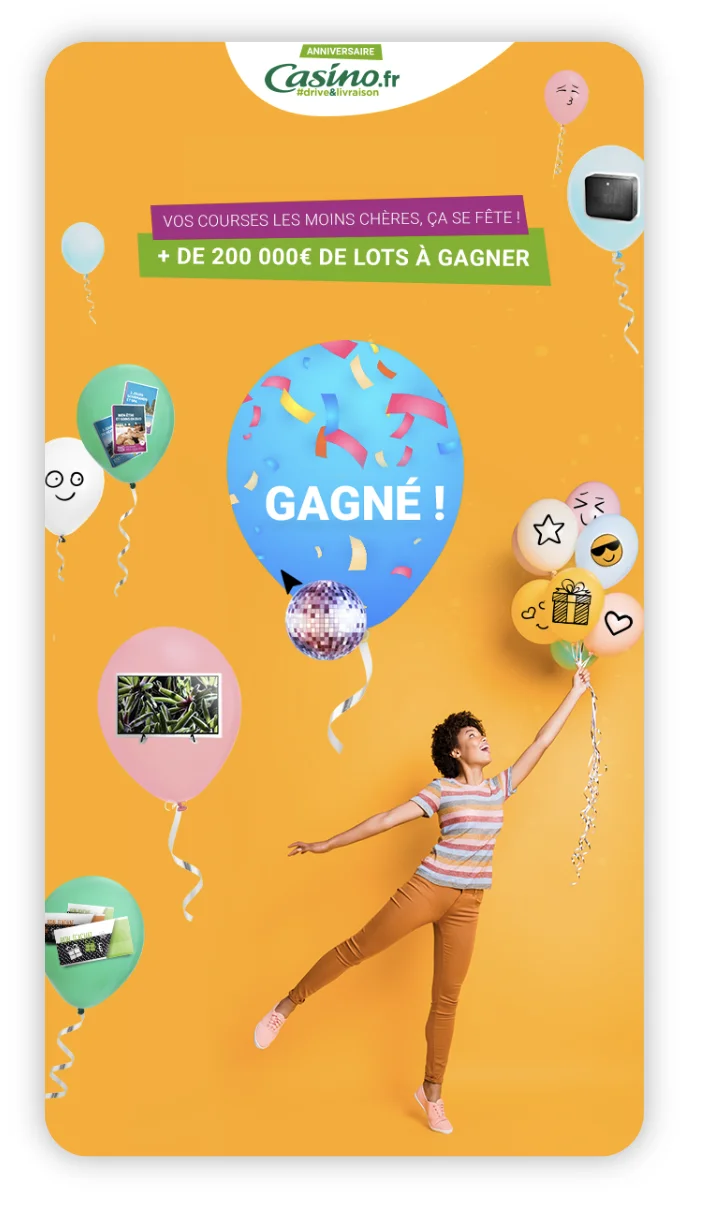
4. Improve customer loyalty through more targeted communication
Example: Leroy Merlin’s “Renovation” campaign led to the creation of new customer accounts. Each user was qualified using the Swiper, the brand was able to send out offers tailored to the needs of each participant, depending on their renovation project and purchasing intentions (kitchen, bathroom, decorating preferences). The brand was able to send offers tailored to the needs of each participant.
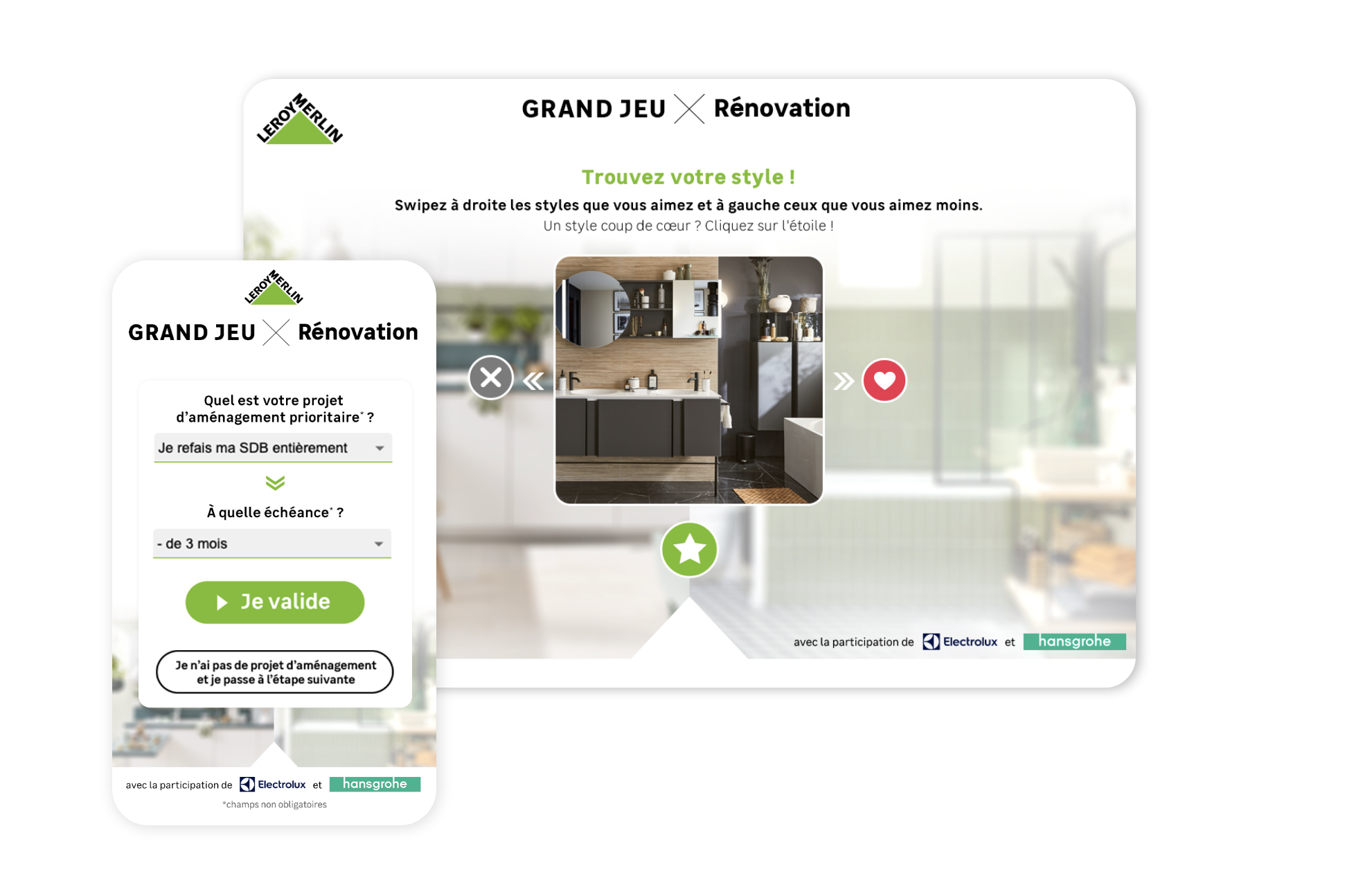
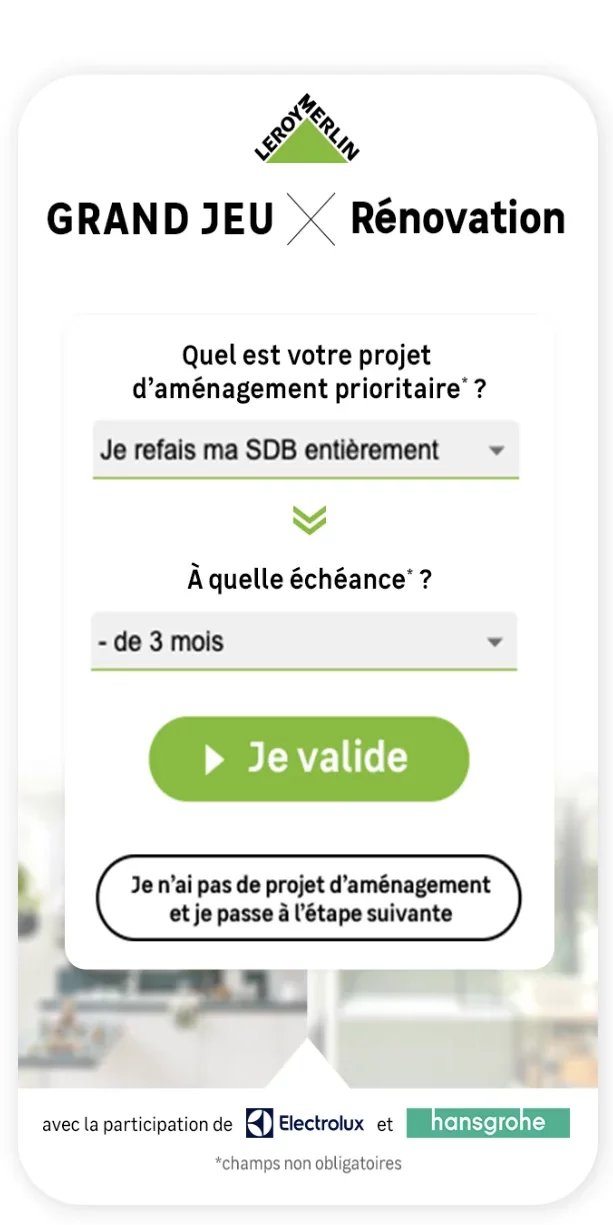
Our recommendations for a successful Drive-to-Web gamified campaign
- Choosing the right game mechanics according to the objective: the type of game must be in line with users’ expectations and the brand’s objectives. An instant win will be ideal for generating leads, while a personality test will facilitate the collection of customer data.
- Optimise distribution to boost reach. The campaign must be designed to facilitate the redirection of physical leads into digital customers. Paid advertising (social ads and retargeting) will be essential to target the right audiences and follow up prospects who have already interacted with the brand without completing their conversion journey.
- Simplify the user journey to maximise post-game conversion. An effective game should not be a dead end, but a springboard to conversion. It is therefore important to reduce the number of stages as much as possible and to focus on the immediate rewards, which speed up the act.
Conclusion
A successful Drive-to-Web campaign is based on a strategic choice of format, well thought-out distribution and a fluid user experience. The game becomes a powerful lever for turning every interaction into an opportunity to engage, convert and build loyalty. For powerful interactive campaigns, all you have to do is choose between our marketing game mechanics!




